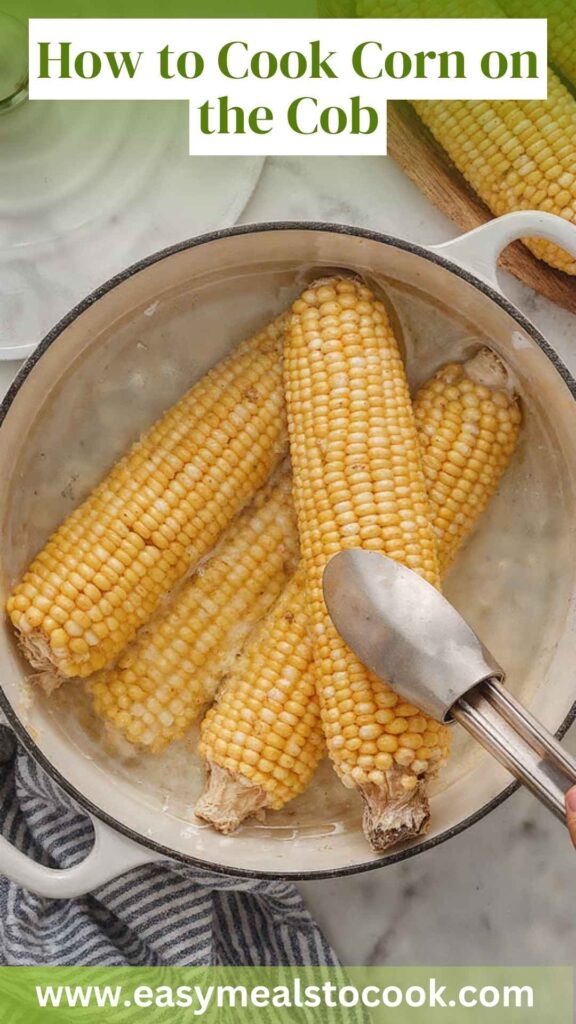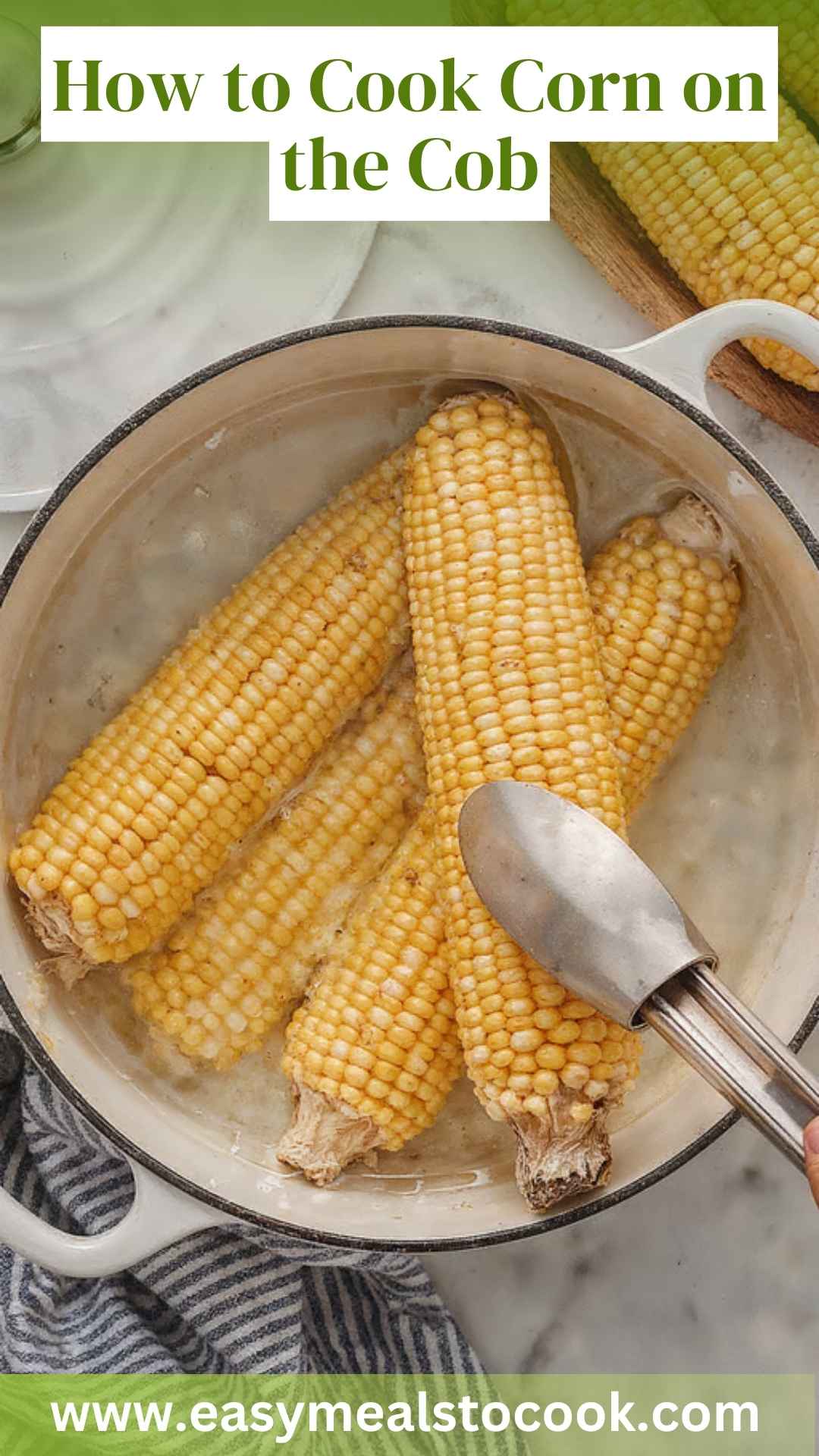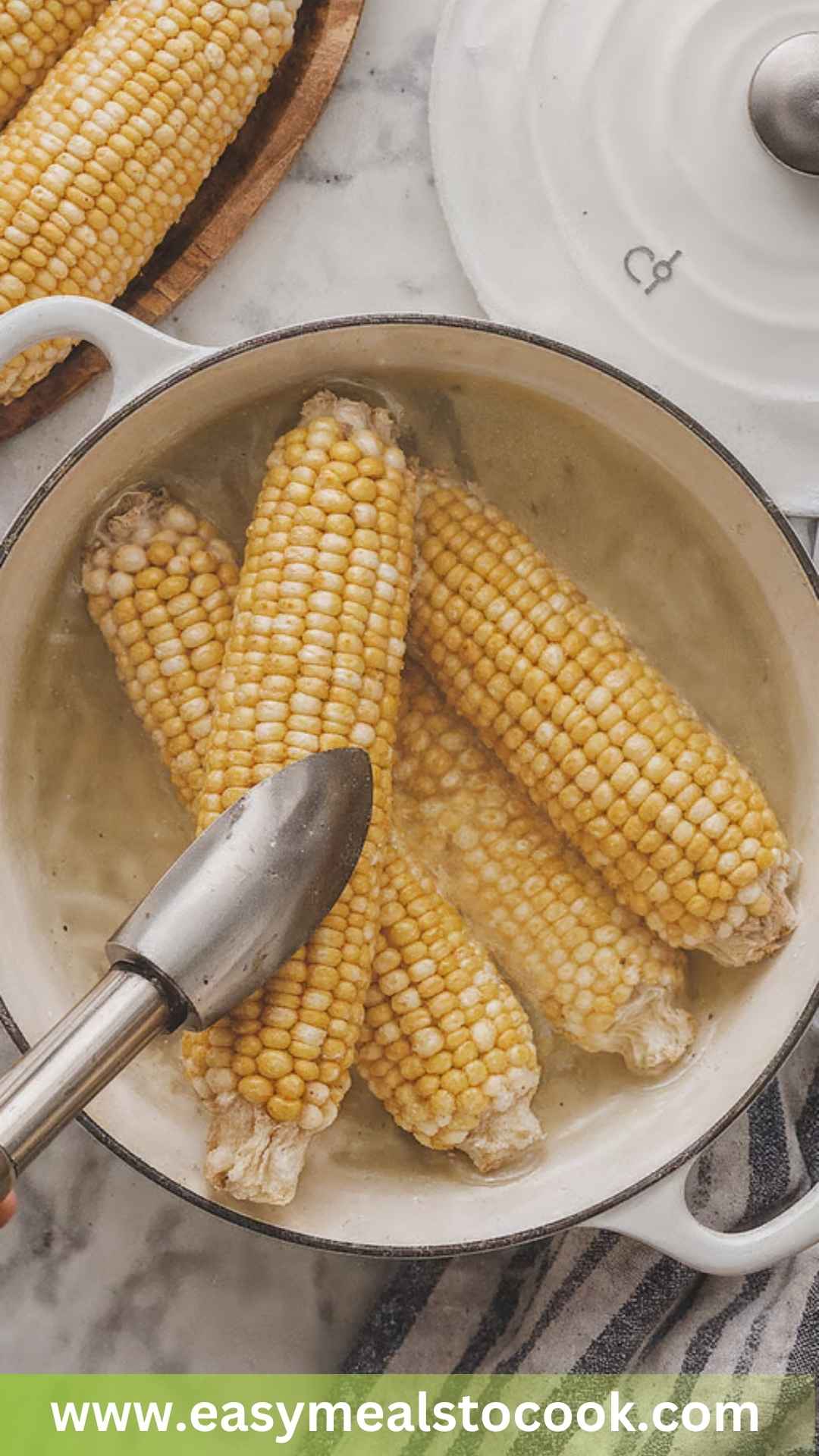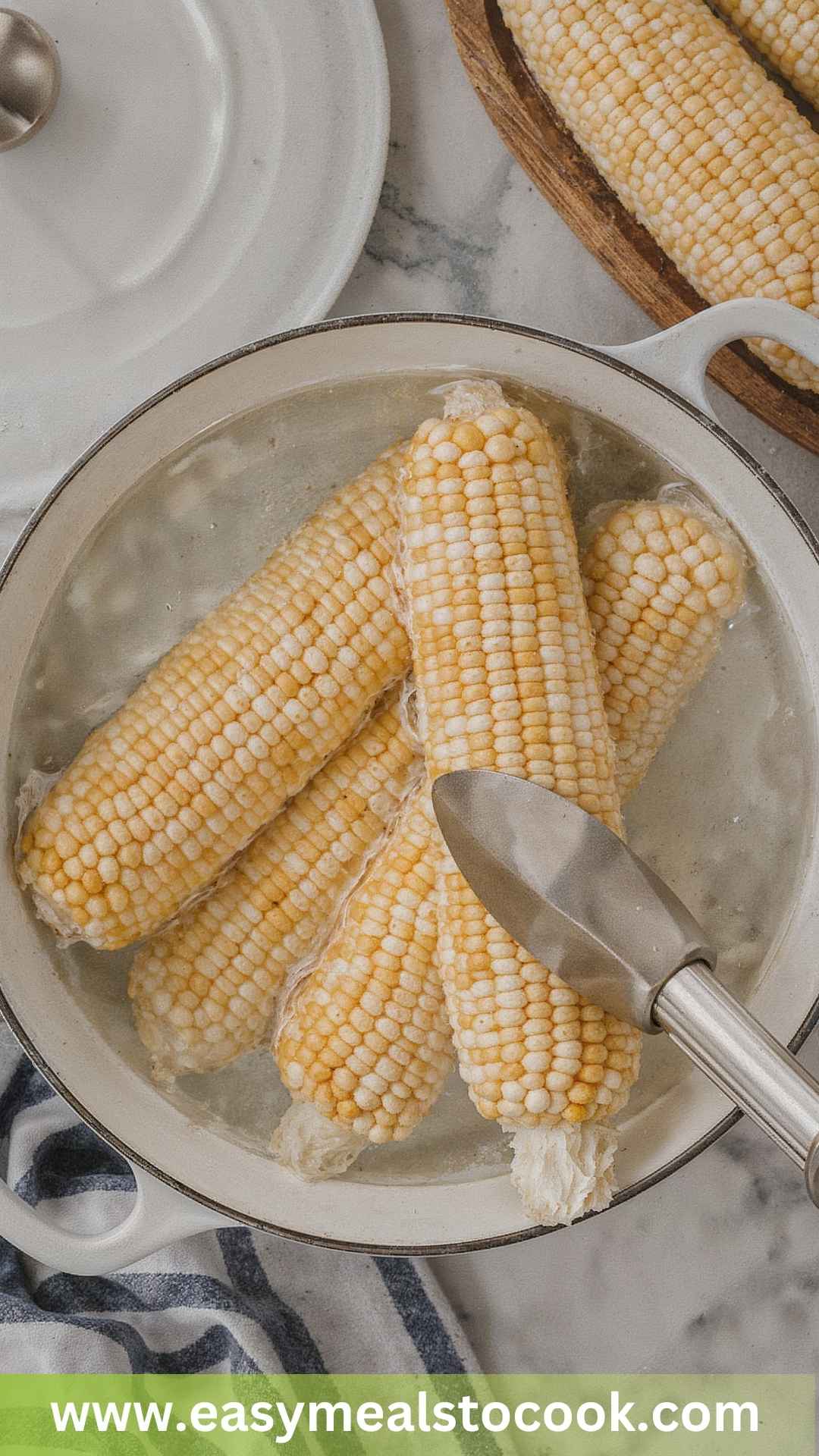Nutrition Facts
Servings 8
- Amount Per Serving
- Calories 90kcal

Corn on the cob is one of those iconic summer staples. The vibrant yellow kernels, bursting with sweetness, are a delight at barbecues, family gatherings, or any casual meal. I remember the first time I learned to cook corn on the cob; it felt like a rite of passage in my kitchen journey. Let’s dive into how you can prepare this tasty treat perfectly every time!

At its core, cooking corn on the cob is about transforming those fresh, plump ears of corn into a mouth-watering side dish. With a few straightforward techniques, you can maximize the flavors and textures of this simple vegetable.
You can grill, boil, or even microwave corn on the cob, each method yielding slightly different results. Regardless of how you do it, the sweet aroma and crunchy texture will elevate any meal you serve.
There is something undeniably nostalgic about biting into a juicy kernel of corn on the cob. It brings back memories of summer picnics and long evenings spent outdoors. Corn is not just delicious; it's also incredibly versatile.
You can enjoy it plain, or dress it up with spices and toppings. Plus, cooking corn on the cob is quick and easy, making it a no-brainer for busy weeknights or casual get-togethers.
Before diving into the cooking process, let’s gather our ingredients. Here's what you’ll need:

Cooking corn on the cob is as easy as 1-2-3. Here’s how to do it, step by step.
First things first, you’ll want to prepare your corn. Remove the husks and silks from each ear. I find that pulling off the husk gently but firmly helps to keep the kernels intact.
Here’s where your options come into play: you can boil, grill, or microwave.
Boiling Method:
Grilling Method:
Microwaving Method:
Now that your corn is cooked, it’s time to add your toppings. In a pan, melt the butter over low heat, adding smoked paprika if you’re using it. Drizzle this over your corn and season with sea salt and black pepper to taste.
Here are some handy tips to enhance your corn-cooking experience:
Corn is more than just a tasty side; it’s also packed with nutrients. Here’s a quick overview of what you get in one ear of corn:
Corn also contains antioxidants that help fight free radicals in your body. It's great for your eye health too.
Absolutely! If you find yourself with leftovers, you can store cooked corn in the refrigerator. Just wrap it tightly in plastic wrap or place it in an airtight container. It stays good for about 3-5 days. When you’re ready to reheat, simply microwave it for a minute or two.
Corn on the cob is wonderfully versatile and pairs well with numerous dishes. Here are some ideas:
If you're feeling adventurous, consider some fun twists on the classic corn on the cob:

Cooking corn on the cob may seem like a simple task, but it embodies the very essence of summertime joy. This guide walks you through everything you need to create that perfect ear of corn, no matter how you choose to do it. From boiling to grilling, each method has its charm.
The best part? You can customize it to your heart’s content. With fresh ingredients and a few tips, you will impress at your next gathering. So, fire up your grill or boil a pot of water. Let’s make cornbread dreams come true! Happy cooking!
Corn on the cob is one of those iconic summer staples. The vibrant yellow kernels, bursting with sweetness, are a delight at barbecues, family gatherings, or any casual meal. I remember the first time I learned to cook corn on the cob; it felt like a rite of passage in my kitchen journey. Let’s dive into how you can prepare this tasty treat perfectly every time!
Here’s where your options come into play: you can boil, grill, or microwave.
Boiling Method:
Grilling Method:
Microwaving Method:
Servings 8